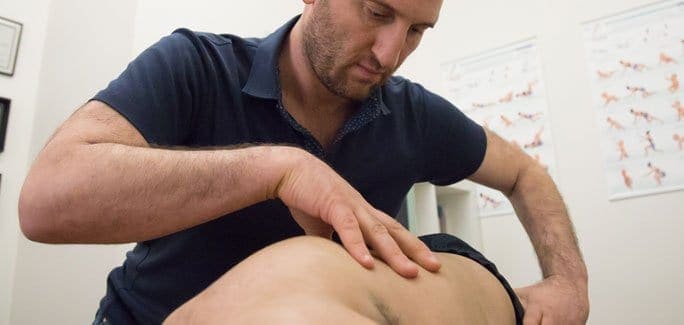Soft tissue of the human body is composed of muscles and connective tissue as well as nerves. They support the skeleton and permit you move. Those tissues often go layers-deep beneath the skin, are sometimes difficult to isolate. Deep tissue treatment involves pinpointing specific soft tissues. The way it treats them is through various methods to relieve aching sensations, rebuild normal function of the muscles and skeleton.There is a variety of methods of deep tissue body work. Each of them is founded on unique philosophy.
The effectiveness of any method is measured by its efficacy of joint range improvement of motion and muscle function while alleviating painful sensation. Qualified practitioners of various methods must undergo extensive training, accumulate practical experience to effectively treat patients. With the number of deep tissue methods available, there are four, that have gained popularity in recent years: ART – Technique of Active Release: ART – the effective standard of PTs – addresses the entire structure surrounding an injury: fascia, muscles, tendons and ligaments, nerves. ART is geared to promoting the movement of smooth muscle tissue, encompassing breakup area of the scar tissue, or adhesions. It helps to restore the function in the shortest period of time.
Adhesions occur in the case of two soft muscles sticking together. When they do – they stop the normal blood flow within the muscle, they tighten the tissue as if locking it in place, even making the muscle shrink. This type of tightening can also cause aching, feeling of weakness and even numbing in the area, especially if this compression caught a nerve. Active Release Technique fixes adhesive structures within the muscle tissue, improves blood circulation, promotes healing.
- Rolfing:The methods is based on the understanding of muscles and bones as a single network interconnected and interactive tissues. Rolfing prepares connective tissue for release, rearranges, stabilizes the entire body. Overworking the muscle tissue (which can happen during a workout session, a hike or even when lifting a child) can lead to imbalance, overstretching or prompting the other end of the muscle to get overly shortened. Addressing those issues Rolfing restores balance to your musculoskeletal system, promoting improved posture, coordinated motion and pain reduced.
- Pfrimmer Deep Muscle Therapy (PDMT): Developed by Therese C. Pfimmer, PDMT seeks to change muscular structure at the cellular level by using cross-fiber strokes. The method was created to stimulate lymphatic drainage in within the injured area as well as blood circulation. This way it promotes your own body’s restoration and self-repair forces, improving overall muscle metabolism. PDMT is famous for decreasing inflammation, pain sensation, improving joint range of motion, blood circulation, lymphatic circulation.
This physical therapy method was created by an osteopath from France named Jean-Pierre Barral. He directed the therapy at body’s visceral organs. His theory promotes this notion that these organs work perfectly together in the healthy condition. In accordance with Barral’s theory, displaced, sick organs or those, which developed adhesions, will start working against the healthy organs, in dissonance. Atypical tension points and areas of chronic irritation appear due to this dissonance. visceral manipulative treatments will restore balance and harmony of the internal body organs and visceral motor function. Most often VM is used to treat back pain, pelvic pain, headaches and other issues.
Whether you are recovering from an injury or suffering continuous persisting pain attacks, the sports medicine specialists at NYDNRehab can help you reduce pain and regain adequate function.
We combine innovative treatment methods and ultra-modern technology to provide efficient diagnostic conclusions and treat your musculoskeletal condition. At NYDNRehab, we’re dedicated to finding the reason of your pain and eliminating it. We aim to restore you to full function and improved quality your life.























































